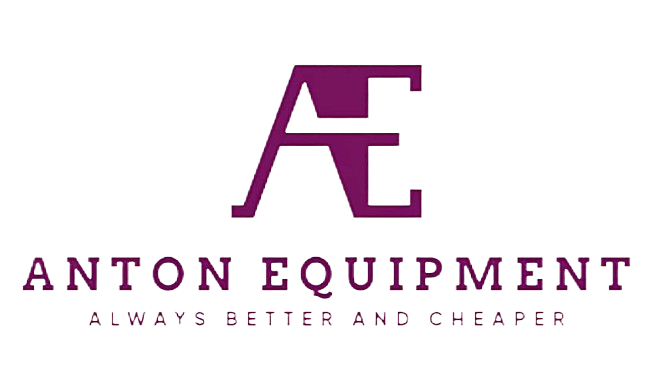News
Efficient Material Handling: Earth Augers and Excavator Attachments for Site Preparation
Understanding Earth Augers vs Excavator Attachments
What Are Earth Augers?
Earth augers are specialized drilling tools designed for creating holes in the ground, making them essential for various landscaping tasks, such as planting, fencing, or post installations. Typically, an earth auger is composed of three main components: the drill bit, which is responsible for cutting into the soil; the shaft, which transfers the force needed to penetrate the earth; and the cutting edge, which aids in chipping away the soil. These tools come in a myriad assortment of sizes to cater to different applications. For instance, smaller augers are ideal for residential landscaping projects where precision and maneuverability are key. Earth augers are powered by various sources, including manual, electric, and gas, offering versatility depending on the scale and requirements of the project.
Types of Excavator Attachments
Excavator attachments encompass a broad range of tools, each designed for specific functions in construction and mining. Common attachments include buckets for digging, hydraulic hammers for demolition, and augers for drilling. These attachments transform excavators into multifunctional equipment by allowing them to handle a diverse array of tasks efficiently. Selecting the correct attachment is crucial for optimizing project efficiency and achieving superior results. For example, using a hydraulic hammer for material breaking or a bucket for excavation ensures that specific tasks are completed swiftly and effectively, ultimately boosting project productivity and reducing labor costs.
Core Components and Functionality
Both earth augers and excavator attachments are built with essential components that contribute to their robust functionality. In earth augers, the auger bit plays a pivotal role in soil penetration, while in excavator attachments, hydraulic power is a key component that enhances its efficiency and versatility. By using hydraulic systems, excavators can power attachments, allowing them to perform tasks ranging from lifting to demolishing more efficiently than traditional methods. The strategic use of well-matched attachments can dramatically increase productivity by providing the right tools for specific tasks, whether drilling holes with earth augers or moving materials with a bucket attachment, streamlining construction operations.
Primary Applications and Use Cases
When to Use Earth Augers: Drilling and Landscaping
Earth augers excel in specific scenarios like landscaping projects and drilling for fences, where precision and efficiency are crucial. These tools are particularly advantageous when working in confined or sensitive environments, due to their minimal disturbance. An earth auger's ability to quickly dig uniform holes significantly boosts efficiency over traditional methods like shovels. According to industry statistics, earth augers can reduce drilling time by up to 70%, making them a preferred choice for tasks such as planting trees or installing fence posts. Successful projects, such as urban tree planting initiatives, have notably benefited from incorporating earth augers in the planning phase, ensuring project timelines are met and labor costs are minimized.
Excavator Attachments for Material Handling and Demolition
Excavator attachments stand out for their versatility, especially in material handling and demolition activities. Different attachments, like buckets and hydraulic breakers, cater to specific tasks—buckets excel in loading and soil manipulation, while hydraulic breakers efficiently tackle demolition. According to an industry report, deploying specialized attachments can lead to a 25% increase in performance on construction sites. Case studies from large-scale projects, such as urban redevelopment initiatives, highlight the effectiveness of excavator attachments. These projects often benefit from equipment like grapples and crushers, which streamline tasks and enhance site safety, demonstrating the critical role of attachments in modern construction workflows.
Mini Excavator Attachments in Tight Spaces
Mini excavators equipped with innovative attachments are ideal for operating in tight or confined spaces. Their compact size and agile maneuverability make them suitable for diverse applications such as urban landscaping and complex utility work. The array of attachments available—ranging from augers to mini buckets—enhance the versatility of these machines. Mini excavator attachments not only fit into restricted areas but also offer significant cost efficiencies by reducing the need for larger equipment. Data suggests that opting for mini excavators in limited spaces can yield substantial savings, with operational costs dropping by as much as 20%, while still maintaining high productivity levels.
Key Differences in Performance and Efficiency
Power Requirements: Augers vs Hydraulic Hammers
Understanding the power requirements of earth augers versus hydraulic hammers is crucial for optimizing equipment efficiency in heavy-duty applications. Earth augers rely on hydraulic systems that efficiently drive drill bits through soil, offering minimal power consumption compared to hydraulic hammers used for breaking hard materials like concrete and rock. Hydraulic hammers demand significantly more power, often resulting in higher fuel usage. For example, larger hydraulic hammers can consume up to 20% more fuel than augers of similar size, significantly impacting operating costs. Selecting the appropriate equipment—such as an earth auger for drilling in sensitive areas or hydraulic hammers for demolition work—can lead to substantial time and cost savings. With efficient power consumption, earth augers can deliver results quickly while ensuring lower environmental impact and fuel costs. Utilizing earth augers in various applications can offer tangible benefits over traditional methods like manual digging.
Versatility of Skid Steer Attachments
Skid steer attachments are distinguished by their adaptability, allowing operators to quickly swap different tools for various tasks. This versatility enhances productivity as operators can readily switch between attachments such as buckets for digging and hydraulic hammers for breaking. Compared to dedicated machines, the time saved using versatile skid steer attachments is significant, often translating into a 30% increase in operational efficiency. This multifunctionality of skid steer attachments makes them invaluable in industries like agriculture and construction, where adapting to changing task requirements is essential. By facilitating a broad range of applications, versatile skid steer attachments help streamline operations, reduce equipment investment costs, and improve overall project timelines.
Terrain Adaptability: Tractor Attachments for Sale
Tractor attachments are designed for adaptability across diverse terrains, from smooth fields to rugged, rocky landscapes. Common attachments include plows and harrows for soil cultivation, mowers for crop maintenance, and loaders for transporting materials, each tailored for specific conditions. The right tractor attachment can improve performance significantly, especially under varying soil and climate conditions, as evidenced by a 20% efficiency increase in land clearing tasks. This adaptability is critical for minimizing undue wear on machinery and maximizing operational efficiency. Ensuring compatibility between attachments and the terrain they work on not only enhances productivity but also prolongs equipment lifespan by reducing stress on tractor components. Selecting the right attachment is vital for achieving efficient and cost-effective land management solutions.
Factors to Consider for Your Project Needs
Project Scope and Soil Conditions
Choosing the right equipment for your project is largely influenced by the project's scope and soil conditions. For instance, larger, complex projects may require powerful augers and versatile excavator attachments that can handle varied textures and densities. Soil type plays a crucial role; sandy soils might be easy to penetrate, while clay or rocky soils require robust attachments like mini excavator attachments or earth augers equipped with precision bits to maximize efficiency. Industry experts recommend conducting a detailed soil analysis before selecting machinery to ensure optimal performance and results. Analyzing these factors will assist in making informed decisions that enhance project efficiency and reduce unnecessary costs.
Budget Constraints: Rental vs Purchase
When considering whether to rent or purchase earth augers and excavator attachments, budget constraints are critical. Renting can be cost-effective for short-term projects or when trialing new equipment, offering flexibility without a significant initial expenditure. Conversely, purchasing is advantageous for frequent use and long-term projects, potentially reducing costs over time. Market surveys reveal average rental costs are significantly lower but purchasing ensures the equipment is always available. Businesses should carefully assess their budget relative to equipment investment needs, considering usage frequency and future projects that might benefit from ownership. This evaluation helps in optimizing financial resources without compromising on efficiency.
Equipment Compatibility and Machine Size
Ensuring that new attachments are compatible with existing machinery is essential to prevent operational inefficiencies. The size and power of the machine can directly impact performance, making it crucial to choose attachments that match the machine's specifications. Industry standards and compatibility charts, such as those outlining skid steer attachments, provide clarity on suitable matches across different machines. Proper sizing and attachment compatibility are necessary steps to avoid downtime and enhance project execution efficiency. Integrating compatible equipment optimizes performance, ensuring that machinery operates at peak efficiency, thereby contributing to successful project outcomes.












































